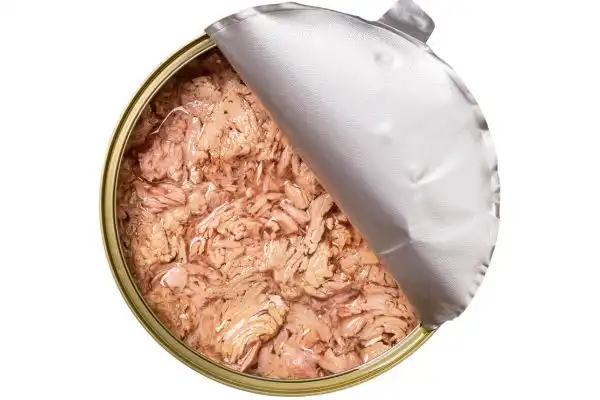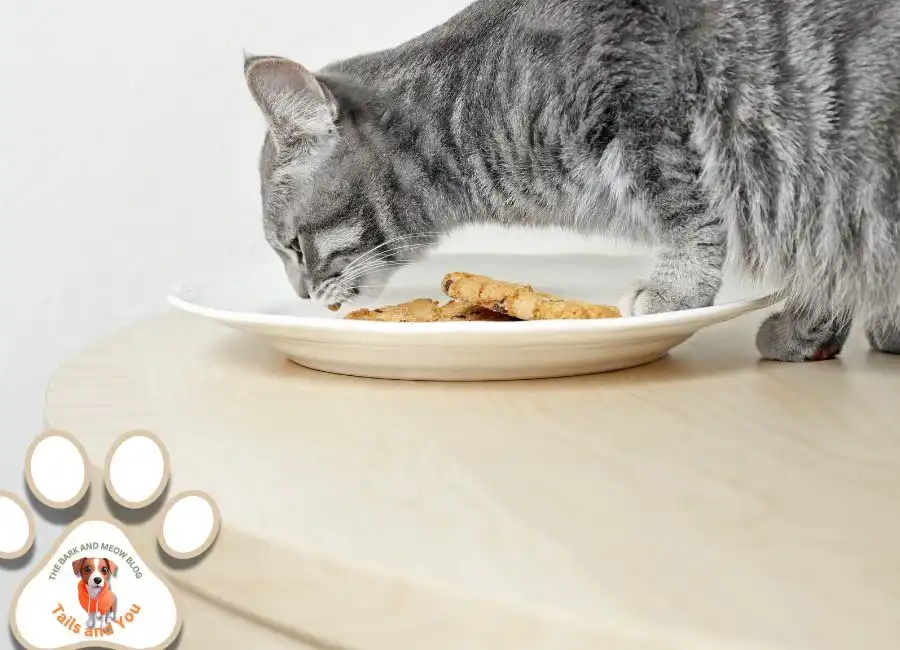There’s nothing quite like the satisfaction of whipping up a homemade treat for your furry friend. If you’re a cat parent, you’ve probably found yourself wondering if there’s more you can do to pamper your kitty beyond the usual store-bought treats. Enter homemade tuna cookies! Not only are these treats irresistibly tasty for cats, but they’re also a healthier option. Let’s dive into the details and get baking!
Introduction to Homemade Cat Treats
Why Make Your Own Cat Treats ?
So, why should you bother making your own cat treats? Well, it all comes down to quality and care. Store-bought treats often contain fillers, artificial flavours, and preservatives that aren’t exactly the best for your feline friend. Homemade treats, on the other hand, are fresh and can be tailored to meet your cat’s specific dietary needs or preferences.
Benefits of Tuna for Cats
Tuna is a favourite among cats, and it’s easy to see why. It’s packed with protein, omega-3 fatty acids, and other essential nutrients that can support your cat’s overall health. Tuna is not just tasty; it’s a powerhouse ingredient that can help maintain a shiny coat, healthy skin, and strong muscles.
Choosing the Right Tuna
Not all tuna is created equal, and when it comes to your cat’s health, it’s important to choose wisely.
Fresh vs. Canned Tuna
Fresh tuna is a fantastic option, but it’s not always practical or available. Canned tuna is a more convenient choice, but be sure to select tuna packed in water, not oil, and with no added salt or other seasonings. These can be harmful to your cat.
Avoiding Additives and Preservatives
When selecting tuna, steer clear of products with added preservatives or artificial flavours. These can cause digestive issues or other health problems in cats. Always opt for the most natural and simple option available.

Additional Ingredients and Their Benefits
In addition to tuna, you’ll need a few other ingredients to make these cookies. Each ingredient has its purpose and benefits for your cat.
Flour Choices: Safe Options for Cats
While cats don’t need grains in their diet, a small amount of flour is necessary to bind the cookies. Whole wheat flour, oat flour, or rice flour are good options, as they are generally safe for cats and provide some nutritional benefits. Avoid using any flour that contains gluten, as some cats may have sensitivities to it.
Adding Egg for Protein
Eggs are a great source of protein and help to give the cookies a nice texture. They also add essential nutrients like vitamin D, which can support your cat’s bone health. Make sure to use a fresh egg and cook the cookies thoroughly to avoid any risk of salmonella.
Prep Time: |
Bake Time: |
Total Time: |
Servings: |
| 20 Min | 15 Min | 35 Min | 24 |
Ingredients for Homemade Tuna Cookies
Making These Treats is Simple and Requires Only a Few Ingredients:
- 1 ¼ Cups Canned Tuna. Canned Tuna should be in Spring Water
- 1 Egg
- 1 Cups Whole Wheat Flour
Step-By-Step Recipe
Step 1 – Mixing the Ingredients
Start by preheating your oven to 350°F (175°C). In a large bowl, combine the drained tuna, egg, and flour. Mix thoroughly until you get a dough-like consistency. If the mixture is too dry, add a small amount of water or tuna juice to moisten it.
Step 2 – Shaping the Cookies
Once your dough is ready, scoop out small amounts and roll them into bite-sized balls. You can flatten them slightly with a fork to create that classic cookie shape. Just remember, these cookies are for your cat, so size them accordingly—about the size of a dime should be perfect.
Step 3 – Baking to Perfection
Place the cookies on a parchment-lined baking sheet and bake for about 12-15 minutes, or until they are firm to the touch and lightly golden. Be sure not to overbake, as this can make them too hard for your cat to chew.
Step 4 – Cooling and Storage
Once the cookies have cooled completely, store them in an airtight container. They should keep for up to a week in the refrigerator, or you can freeze them for longer storage. Just be sure to thaw them before serving.
Nutritional Facts (Per Serving)
25
Calories
1.0g
Fat
2.0g
Carbs
2.5g
Protein
Your Title Goes Here
Your content goes here. Edit or remove this text inline or in the module Content settings. You can also style every aspect of this content in the module Design settings and even apply custom CSS to this text in the module Advanced settings.
Show Full Nutrition Label
Nutrition Facts
Serving Per Recipe: 24
Calories: 25
| % Daily Value* | |
| Calories: 25 | 1.25% |
| Protein: 2.5g | 5% |
| Fat: 1.0g | 1.5% |
| Total Carbohydrates: 2.0g | 0.7% |
| Fibre: 0.2g | 0.7% |
| Omega-3 Fatty Acids: 2.4g | |
| Sodium: 10mg | 0.4% |
| Calcium: 5mg | 0.4% |
* Percent Daily Values are based on a 2,000-calorie diet. Your daily values may be higher or lower depending on your calorie needs.
** Nutrient information is not available for all ingredients. Amount is based on available nutrient data.
(-) Information is not currently available for this nutrient. If you are following a medically restrictive diet, please consult your doctor or registered dietitian before preparing this recipe for personal consumption.
Tips for Success
Adjusting the Recipe for Picky Eaters
If your cat is particularly finicky, consider adding a sprinkle of catnip to the dough or a bit of grated cheese for extra flavour. You can also try varying the texture by adding a bit of grated carrot or finely chopped spinach.
Safe Treating Practices for Cats
While these tuna cookies are healthy, they should still be given in moderation. Treats should make up no more than 10% of your cat’s daily calorie intake. Also, always supervise your cat when trying a new treat to ensure they don’t have an adverse reaction.
Homemade tuna cookies are a fantastic way to spoil your feline friend while ensuring they stay healthy. They’re simple to make, packed with nutrients, and your cat will absolutely love them. Plus, by making your own treats, you’re taking an active role in your pet’s health and well-being. So, what are you waiting for? Grab that can of tuna and start baking—your cat will thank you!
Frequently Asked Questions (FAQs)
Q: Can I use a different type of fish instead of tuna?
A: Yes, you can substitute tuna with other fish, like salmon or mackerel, but ensure its cooked and deboned.
Q: My cat is allergic to eggs. What can I use instead?
A: You can use a small amount of mashed banana or unsweetened applesauce as an egg substitute.
Q: How often can I give my cat these tuna cookies?
A: These treats should be given in moderation, no more than 2-3 cookies per day, depending on your cat’s size and activity level.
Q: Can I make these cookies gluten-free?
A: Absolutely! Use gluten-free flour like rice flour or almond flour to make these cookies safe for gluten-sensitive cats.
Q: How should I store these cookies for maximum freshness?
A: Store the cookies in an airtight container in the fridge for up to a week or freeze them for up to three months.




